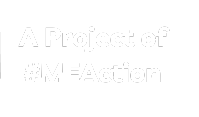Transcranial magnetic stimulation
From MEpedia, a crowd-sourced encyclopedia of ME and CFS science and history
This article is a stub. |
Transcranial magnetic stimulation or TMS or Repetitive Transcranial Magnetic Stimulation or rTMS is a way of using magnetic fields to stimulate nerve cells in the brain without the need for drugs, and without inserting anything into the brain.[1]
Theory[edit | edit source]
Evidence[edit | edit source]
TMS is typically used for depression, when conventional treatments have not worked.[1]
There is also some limited evidence for using TMS for migraine prevention or during migraines.[2]
Solve M.E. have partnered with UCLA's Neuromodulation Division at the Iris Cantor Women's Health Center to study the effects of Repetitive Transcranial Magnetic Stimulation (rTMS) as a treatment for ME/CFS.[3]
Clinicians[edit | edit source]
Risks and safety[edit | edit source]
Costs and availability[edit | edit source]
Notable studies[edit | edit source]
See also[edit | edit source]
Learn more[edit | edit source]
- Neuromodulation for ME/CFS at UCLA
- Transcranial magnetic stimulation - The Mayo Clinic
References[edit | edit source]
- ↑ 1.0 1.1 "Transcranial magnetic stimulation". Mayo Clinic. Retrieved March 26, 2021.
- ↑ "Migraine - Treatment". nhs.uk. October 3, 2018. Retrieved October 15, 2021.
- ↑ "Solve M.E. Partners with UCLA on ME/CFS Research on Brain Stimulation". Solve ME/CFS Initiative. March 16, 2021. Retrieved November 14, 2021.

